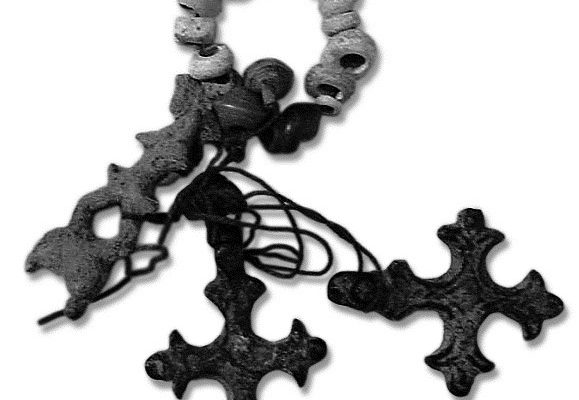The shores of Issyk-Kul Lake are rich with ancient pictures on rocks and stones dating back to the Aryan age, as well as ancient Buddhist and Uighur texts and Nestorian epitaphs which await further study. Deserving special attention are the Nestorian Christian monuments which lie along the Silk Road from Tash Rabat monastery in the central Tian-Shan, to Suyab and Nevaket in the Chui Valley, and among the sunken ruins beneath Issyk-Kul. 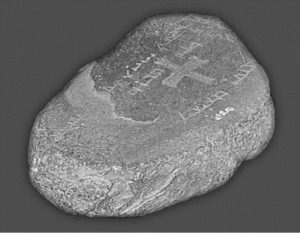
Kyrgyzstan, where the religion of the majority of the population is Islam, may be one of the first remote sites of Christianity in Central Asia. According to some reliable sources, Christian believers were already here in the first century AD. The Great Silk Road and active trade transformed the lands of Semirechye and Ferghana into a crossroads of medieval cultures. Visiting merchants, goods and suppliers of news transmitted the basics of foreign religion to the local population.
Theological Legends
According to Eastern Orthodox legend, the territory of Central Asia was visited by at least one of the twelve followers of Christ, Apostle Thomas, as long ago as the middle of the first century. The spirit of God brought him to “Indian countries.” Contrary to the modern understanding, in the first century AD this name was used not only for the lands of the current Hindustan peninsula, but for all the territories beyond the eastern boundary of the Roman Empire. It is written that he preached not only for Hindus but for people of other tribes who practiced different religions — ancestors of the modern population of Central Asia.
According to Eastern Orthodox legend, Central Asia was visited by another apostle, Saint Andrew the first. “Christ the Lord appeared to him in the city of Ephesus and said: Do not be afraid, I follow you. Scythian countries are waiting for you.” As is known, Scythians (Sakis) roamed along the territory of the Tian-Shan.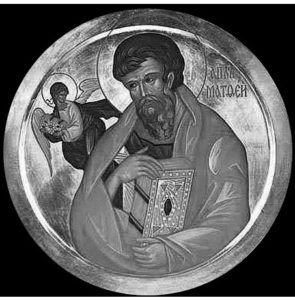
Byzantine clergy maintained contact with representatives of the Chorasmian archbishopric of the Ephtalits empire in the fourth and fifth centuries.
Evangelists traveled peacefully without conflicts with Zoroastrians, representatives of the local faith, and Buddhists. During the excavation of ancient settlements in Chui oblast, archaeologists found Buddhist and Zoroastrian sacred objects near Christian churches.
Ephtalits supported Christians. They even minted coins with attributes of the Christian faith: on one side of the coin was the symbol of the savior, the lamb; on the other side the lion, the symbol of Byzantium supreme power.
Archaeological Artifacts
One of the largest and most influential sects of ancient Christianity is Nestorianism, which found shelter in the Central Asian region. Nestorianism came to the territory of Kyrgyzstan from Persia at the end of the eighth century. The Nevaket metropolitan was founded in the state of Karluks; their own theological school developed. The inscription on one kairak reads, “It is the tomb of the honored theologian and preacher who illuminated all monasteries, son of the theologian Peter.”
Nevaket is a large medieval settlement situated on the Silk Road, on the road to Issyk-Kul Lake. It has been well studied by scientists (recently by our archaeologist, Professor V.D. Goryacheva). Excavations uncovered bronze Nestorian natal crosses and ceramics with crosses. Archaeologists reconstructed the excavated site and characterized it as a medieval Christian settlement.
There was also a Buddhist monastery on the territory of Nevaket. Here Zoroastrian ossuaries were discovered and have been preserved according to UNESCO recommendations.
The partially excavated church complex of Suyab is from the tenth century. It consists of three integrated churches. It is expected that monastic cells will be found in the unexcavated parts of the monastery. The huge church complex is witness to the significant role that Christianity played on the Silk Road. Scientists believe that Suyab may have been the residence of the bishop or metropolitan.
A ceramic vase painted with blue glaze has been housed in the Tashkent History Museum since the last century; it was delivered there from Issyk-Kul. Twelve human figures are depicted on it. Their appearance, which is unusual for Semirechye, has led to speculation that the vase depicts the Twelve Apostles. The Issyl-Kul vase requires further study.
Silver plates with gilding known as Anikovskoe and Grigorievskoe, after the place where they were found at the end of the nineteenth and beginning of the twentieth centuries, have generated much discussion. For a long time the two plates were believed to be Iranian-Sasanid, but then their Central Asian origin was discovered. Currently it is believed that they were cast in the Nestorian areas of Semirechye in the ninth to the eleventh centuries according to a seventh century mold.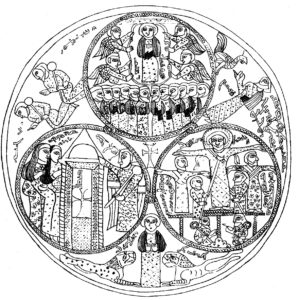
The prosperity of the medieval city Tarsakent (meaning “the city of Christians”), which is situated on the road from Bishkek to Issyk-Kul, is connected to the Nestorian faith. According to chronicles of the medieval historian Rashid-ad-Din (thirteenth-fourteenth centuries), Tarsakent is a city which “existed from centuries past.” Archaeologists discovered more than 3,000 tomb monuments there—kairaks, marked with a cross. All of them have been traced to the eighth-fourteenth centuries. The city was under the jurisdiction of the Nevaket metropolitan. Rashid-ad-Din remarked that “there was a huge Armenian church community in Tarsakent.” A bronze cross reliquary was found in the territory of Tarsakent by local historians. On the obverse side, the image of Christ is depicted, while on the four oval sides of the cross the images of saints are depicted. The reverse side is empty, designed for holding a relic. Unfortunately the cross reliquary is in a private collection.
The ancient Christian monastery Tash Rabat, in the central Tian-Shan, is a monument of Nestorian church architecture. The monastery, situated in a deserted mountain pass, was built in the tenth century by a group of monks who had traveled from far away in search of solitude. Local workers helped to build it. They decorated the monastery with carvings on pink clay, typical of Central Asian art.
Turkic Christian craftsmen strove to engrave sacred images not only on the frescoes of temples but on fabric, ceramics and metal.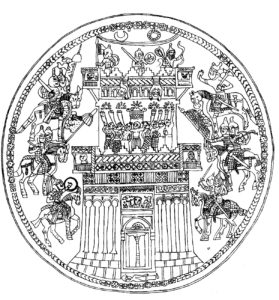
There is much evidence to show that Christianity was widely present on the territory of Kyrgyzstan, especially its Nestorian and Armenian-Gregorian churches. The first steps have been taken to study the early Christian communities in the area of Issyk-Kul. Here a whole complex was preserved—the cave catacomb temple Ak-Bulun, the medieval settlement Kurmenty, the remains of the Holy Trinity Orthodox Monastery of the nineteenth century. All are situated in one place, on the northeastern shore of Issyk-Kul in the region of Kurmenty.
We can conclude that archaeological artifacts of Christian relics are located throughout the territory of the Tian-Shan mountains, but the most recent sensation has been the discoveries at the bottom of Issyk-Kul Lake.

